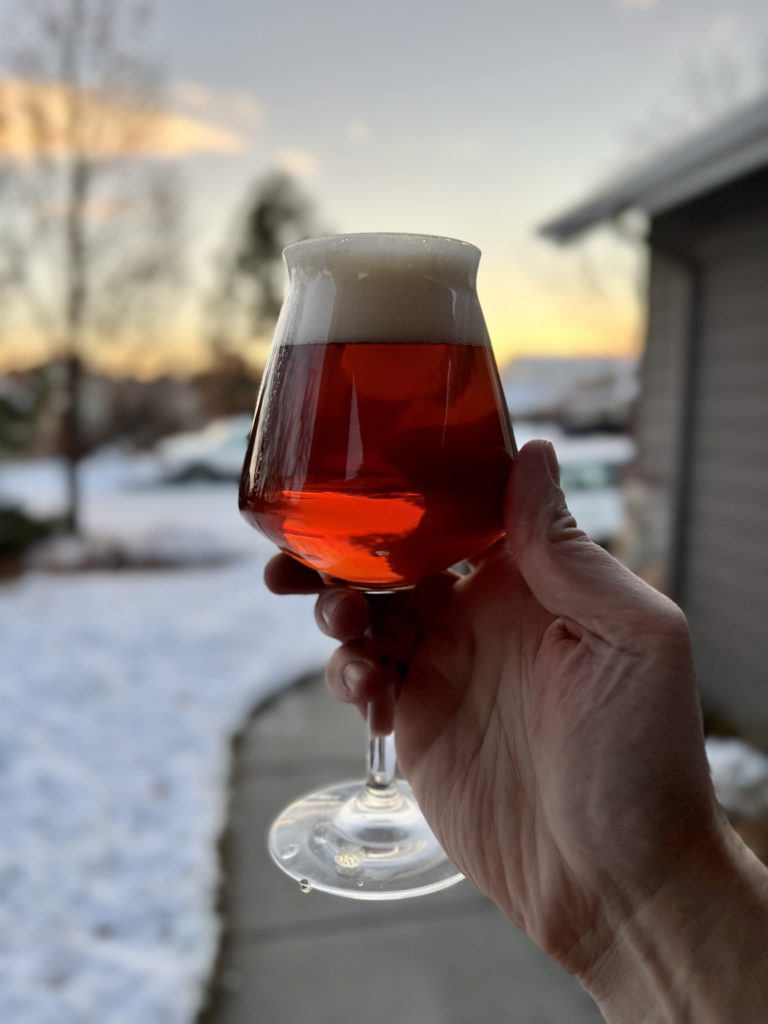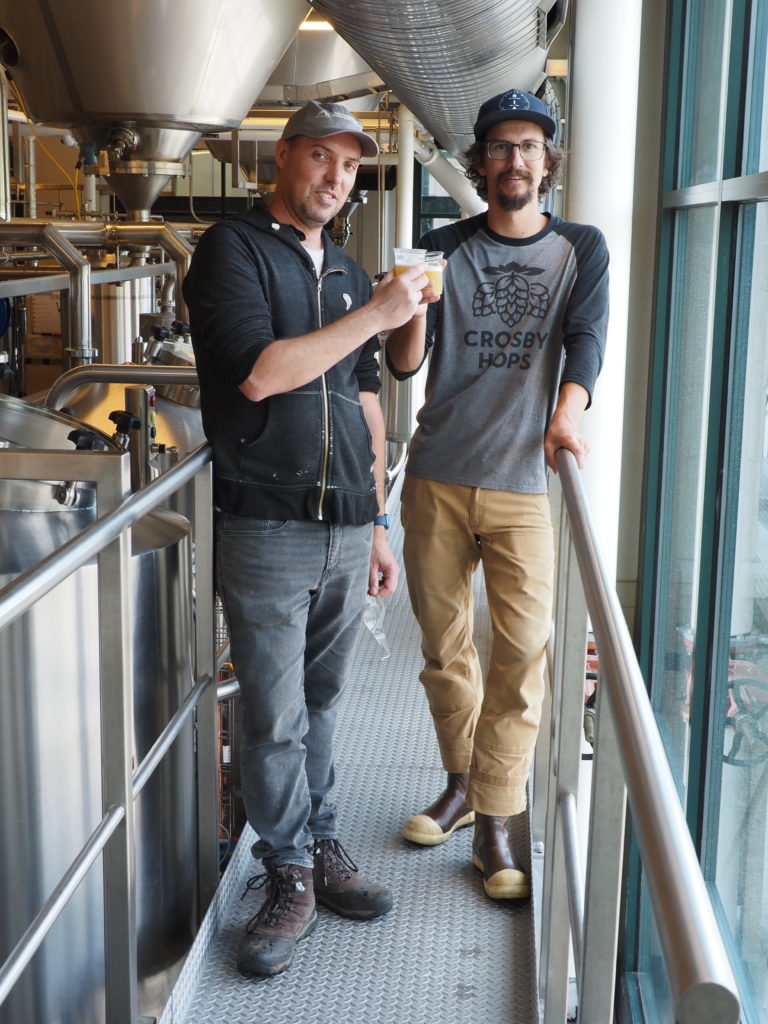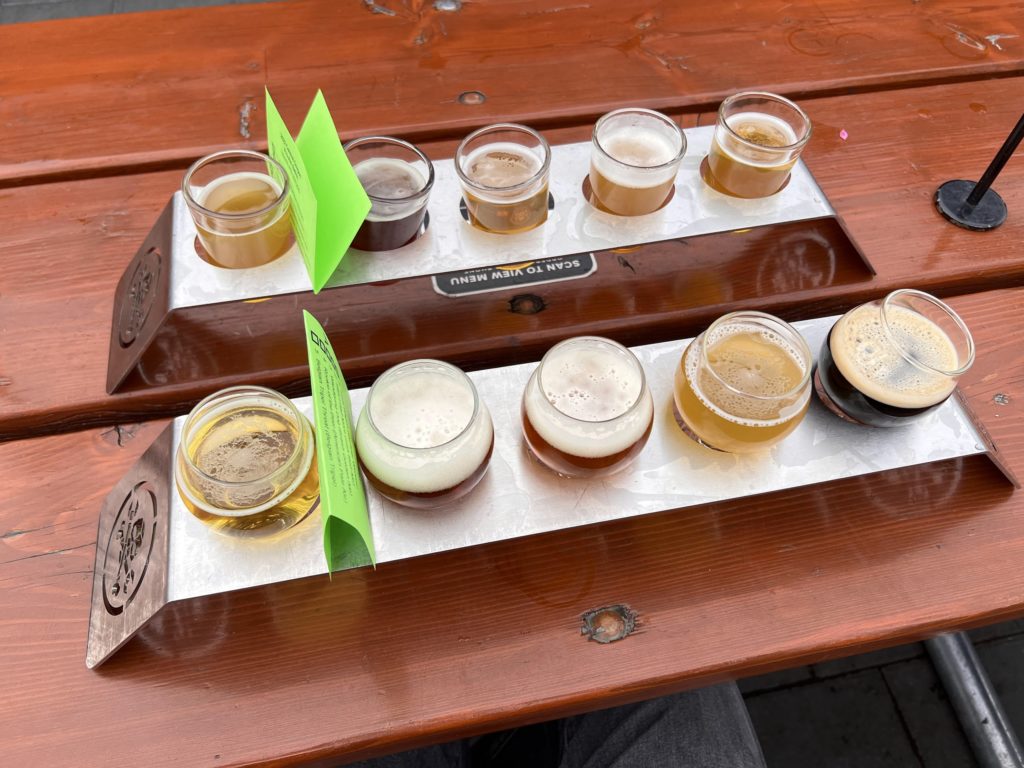How I Ended Up Making an Altbier with Deschutes Brewery
A lot of homebrewers dream of going pro. Not me. I ain’t got time for that. For one thing, I have a career I like already—one that doesn’t involve lifting sacks of malt and raking out mash tuns every day. For another, I know all too well that turning a hobby into a job can kill everything you once loved about it.

But despite my resistance to the idea, late last year I found myself mashing in on my first brew day at Deschutes Brewery. Yes, that Deschutes. The one responsible for iconic beers like Mirror Pond Pale Ale, Black Butte Porter, and Fresh Squeezed IPA. How did this happen? Well, I won a contest. (Kinda.)
My homebrew club in Bend—Central Oregon Homebrewers Organization (COHO)—put on a pro-am competition that brought together Central Oregon homebrewers and breweries. The idea was simple: 10 of the best local breweries would judge homebrewed beers, pick their favorite, and brew it on their own system with the help of the lucky homebrewer. And yes, my altbier got picked by Deschutes.
This actually came as a shock to me, because I didn’t particularly like it.
The competition rules allowed us to enter three beers each. I entered (in order of personal preference) a west coast pilsner in the vein of Highland Park Brewery’s Timbo Pils, a dry-hopped English pale ale along the lines of Timothy Taylor Landlord, and a German altbier. And yet it was the altbier—a beer that I entered just because I happened to have it on hand—that secured me a my pro brew day.
But hey, it’s not how you get to the big show that matters. It just matters that you get there. So here’s the beer I made with Deschutes, and here’s what happened.
What’s in it?
The Vitals
- Name: Altered Staat
- Category: Altbier (BJCP 7B)
- Batch size: 2.6 bbl (about 80 gallons)
- Mash: 30 minutes @ 152F; 5 minutes @ 170F
- Boil: 45 minutes
- Fermentation: Alt yeast batch: 58F to 63F over 4 days; Kölsch batch: 66F over 3 days
- OG: 11.8P (1.048)
- FG: 2.6P / 1.010 (both batches)
- ABV: 4.9%
- IBU: 30 (theoretical); 45.5 (Alt) and 38 (Kölsch), measured
The Grain
- 110 lbs Weyermann Barke Pilsner (76.7%)
- 20 lbs Weyermann Munich II (13.9%)
- 6 lbs Weyermann Caramunich I (4.2%)
- 6 lbs Weyermann Acidulated (4.2%)
- 1.5 lbs Weyermann Carafa Special III (1%)
The Hops
- 0.7 lbs Hallertau Magnum (14% AA) @ 45 minutes
- 0.65 lbs Contessa (2.3% AA) @ 10 minutes
The Rest
- Yeast: We split the 2.6 bbl batch between Omega Kölsch II and Omega Alt (equal volumes into each fermenter)
- Water: Treated Bend tap water w/ a total addition of 20g Calcium Chloride and 10g Gypsum at mash-in and another 12g CaCl2 at the start of the boil; whirlfloc and Yeastex 82 at 5 minutes to go
How’d it go?
Brewing on a commercial system—even a smaller pilot system like the one we used at Deschutes—is a completely different ballgame from brewing at home.
In Deschutes’ pilot brewery, nearly everything is automated. The only things you do by hand are load the grain into the mill, add hops and salts, and open valves. The computer handles the rest.

And the stainless steel… my god, the stainless steel. Thousands upon thousands of pounds of it. Rows and rows of gleaming tanks and kettles. It’s really something to behold.
But still, we managed to almost mess it up right away.
I should say that “we” here was me and Vern, Deschutes’ pilot brewer. Vern was awesome to work with, which comes as no surprise given his homebrewing roots. (He told me that prior to taking the job at the big house, he was brewing up to 30 gallons per month at home to trade for CSA boxes. And even after going pro, he still keeps a stable of corny kegs to fill and take home for his kegerator. That’s one hell of a job perk, if you ask me.)
So, how’d we mess it up? Well, we got to talking about beer, as beer dorks are wont to do, and we… uh… we forgot the Munich malt. You know, a good 14% of the grain bill. We simply didn’t realize we hadn’t added it until a half hour after doughing in.
Ultimately, it wasn’t a big deal—we just loaded it in and tacked another 30 minutes onto the mash. In the end, we hit our numbers and sent the wort off to a pair of fermenters.
Into one fermenter, we pitched a healthy dose of Omega Kölsch II; into the other, a big ol’ pitch of Omega Alt. Then, as usual, came the waiting. Four weeks of waiting, while Vern headed to Mexico to judge a craft beer competition. Finally, after he’d returned, he texted and told me to come by around the end of a work day to give each beer a taste.
The results were more or less in line with what I expected from the given strains, but still managed to pack some surprises. The biggest was that we had somehow drastically overshot our IBU target. We’d aimed for 30 IBU, and somehow the Kolsch batch came in at 38 IBU (lab-tested), while the Alt batch registered a staggering 45.5 IBU. Way more bitter than I’d wanted, but not undrinkably so—just a bit out of balance.
How’s it taste?
One thing I’ve learned in the many months since this brew day is that lager (and lager-like) beer is all about balance. I mean, I kinda knew this years ago, but my last few brews (posts coming soon!) have really instilled in me the need for step mashing for proper body, head, and flavor. This beer, while undeniably tasty, was thinner and less malty than I’d hoped.
Having a relatively fresh pour of Uerige just down the street at Prost!’s Bend location only further confirmed my opinion. Despite the German malt and yeast, this beer came off more like an American brown ale than a proper Alt.

Appearance: Pale brown to ruby red with a fluffy white head that dissipates relatively quickly but leaves some nice lacing down the sides of the glass. Both batches were crystal clear, without any finings after the whirlfloc in the kettle. Just pressure, time, and temperature to do the dirty work.
Aroma: Malt! Glorious German malt! And then a whiff of noble hop aroma under all that malt.
Taste: Here’s where it fell apart a bit for me. All the building blocks are there for a good altbier, but they’re just not… arranged in the right order? This metaphor is getting away from me. But yeah… there’s lots of malty goodness here, but it’s being overridden by hop bitterness. This is also where the two batches on different yeasts really diverged. The Omega Kölsch II version, aside from being noticeably less bitter, was also sweeter, fuller, and softer on the palate, despite finishing at the same FG. Some Deschutes brewers who tasted the batches said they could also catch just a bit of diacetyl in it, too, though lab tests showed it had just 16 ppm in solution, which should be well below most people’s taste threshold. In comparison, the Omega Alt batch was a bit thinner and more neutral in terms of yeast character.
Mouthfeel: Both batches had a generally lager-like finish, and by that I mean American lager more than German or Czech. Crisp, dry, a bit thin. As noted above, the Kölsch II batch had a bit more fullness to it, but I think both would have benefitted from a Hochkurz mash to drive more dextrins and amp up the body.
What would I change next time?
To begin with, I’d step mash, including a long rest around 162F to build more body.
I’d also try to figure out the hopping issue, and I’d probably use all German hops. At Deschutes, we used what they had on hand, but at home I have a wider selection, not being constrained by commercial considerations.
As for the grain bill, I think it’s solid, if not particularly “authentic.” (For reference, here’s what Kunze says an altbier typically is, and here’s what’s allegedly in perhaps the most famous commercial example, Zum Uerige.) Ultimately, I think I’d move toward something along the lines of Uerige if I were to try this again—if only because I’m trying to simplify my recipes across the board.
Last, I’d pressure-ferment if I was doing it at home. I’ll post more about this soon, but suffice it to say I’m all pressure ferm all the time, now.

Leave a Reply